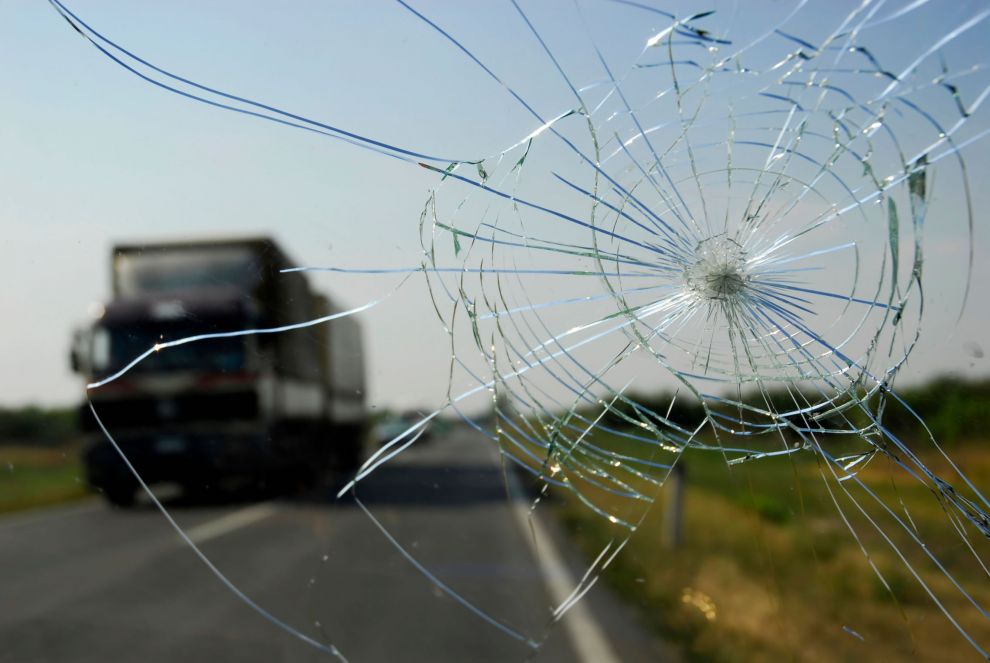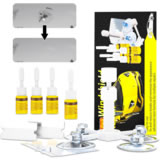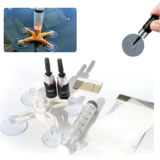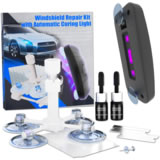Illinois Cracked Windshield Laws
Different states have different laws regarding cracked windshields. A damaged windshield on your car can lead to all kinds of hazardous situations, but Illinois traffic laws do allow driving with a damaged windshield under certain circumstances. Further clarification of the law is available below!
Is driving with a cracked windshield legal in Illinois?
Illinois laws do not specifically mention cracked or damaged windshields. But, there are other relevant regulations which can make driving with a damaged, chipped or broken windshield illegal.
In state of Illinois you are not allowed to have any coverings, stickers or signs or any other objects on the windshield which prevent drivers from seeing the road clearly. Exceptions include stickers mandatory by law, GPS devices, or toll payment devices. Any such devices or items must not obstruct driver’s clear view of the road. This is relevant for damaged windshields as well, as cracks or chips can potentially interfere with your view of the road.
All vehicle windshields must also have functioning windshield wipers. In case your damaged windshield interferes with the operation of wipers, you can get cited.
Federal regulations state that any cracks or chips smaller than ¾-inch in diameter are permitted, as long as they are not located within 3″ of another crack. However, these cracks must not be located directly in front of the driver’s view (top of steering wheel to within top edge of windshield).
Lack of clear rules and regulations for cracked windshields means it’s usually up to each police officer’s discretion whether you’ll be issued a citation or not. What exactly constitutes “Materially obstructing driver’s view“, as the law defines it, is up to each individual officer to determine, and they may use a cracked window or cracked windshield as an excuse to pull you over. In fact, Illinois cops are known for using this as a frequent excuse to pull over drivers and justify vehicle searches and driver license checks, and issue citations to boost their traffic stop numbers.
Unless the crack is in corner and preferably on passengers side, it’s likely you will have to pay a fine and replace or repair your windshield or other cracked windows.
Relevant laws: Illinois Compiled Statutes, Sec. 12-503
Below are excerpts from Illinois Vehicle Code, Chapter 12 (Equipment of Vehicles), Article V (Glass, Windshields and Mirrors) (link).
(a) No person shall drive a motor vehicle with any sign, poster, window application, reflective material, nonreflective material or tinted film upon the front windshield, except that a nonreflective tinted film may be used along the uppermost portion of the windshield if such material does not extend more than 6 inches […]
(c) No person shall drive a motor vehicle with any objects placed or suspended between the driver and the front windshield, rear window, side wings or side windows immediately adjacent to each side of the driver which materially obstructs the driver’s view.
(d) […] no person shall drive a motor vehicle with snow, ice, moisture or other material on any of the windows or mirrors, which materially obstructs the driver’s clear view of the highway.
(e) No person shall drive a motor vehicle when the windshield, side or rear windows are in such defective condition or repair as to materially impair the driver’s view to the front, side or rear.
Cracked windshield penalties
Driving with a cracked windshield in Illinois is considered a traffic infraction. Exact fine can vary, but in most cases you will want to properly repair and replace your windshield as soon as possible.
Windshield repair or replace?
Should you repair or replace your windshield? Depending on the extent of the damage on your car’s windshield you may be able to repair it, or otherwise completely replace it.
If the crack on your windshield is less than 3″ in length, or if you have a small chip which is smaller than the size of a quarter you should be able to repair your windshield, which will cost less than replacing it. In fact, your insurance company may even cover your repair bill if you have road hazard coverage, though you should consult with them first to see if they do.
If your windshield is cracked directly in front of the driver’s line of sight some shops may decline repairing it, since even then it can obstruct your vision and cause safety concerns. If your windshield is too damaged you may have to replace it completely, which can cost a few hundred dollars.
Cracked windshield safety concerns
Impaired vision is not the only reason why you should repair or replace your broken or damaged car windshield. An undamaged windshield is stronger and in case of accidents can prevent further injuries.
In a rollover wreck, the strength of the windshield/sealant system is designed to keep the roof from crushing more than 5 inches when there is a force of approx 1-1/2 times the weight of the vehicle on the roof. In a front end collision at approximately 30mph, the windshield/sealant system is designed to keep at least 50% of the glass sealed to the car which could keep occupants from being ejected.
While you can drive with a cracked windshield and may avoid a ticket from police, it’s certainly not advisable as having a cracked windshield can be dangerous and often against the law.




